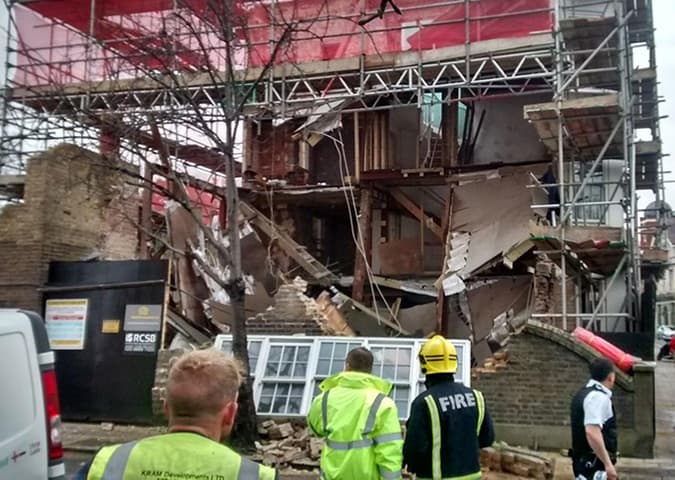BLOG
INTERESTING STUFF
THAT CAUGHT OUR EYE
Barnes House Collapse And How to Protect Your Property

No doubt many of you have been shocked by the recent incident in Barnes where part of a Georgian townhouse on The Terrace collapsed during works to excavate a new basement. Obviously this is tragic for the owners but such a collapse also endangers adjoining properties.
Though the details on the cause of this collapse are not yet known and could be unrelated to the building works, we’ve had many concerned calls from clients about the potential for neighbouring developments to damage their property.
While DGA has completed countless party wall developments with no incident, there’s no guarantee your neighbours will hire an architect with the same standard of safety and quality.
But that doesn’t mean you’re powerless to prevent your house being damaged by a neighbour’s recklessness. This is action you can take to lower risks to your property:
• Ask for the details of the team employed to oversee your neighbour’s works so that you can do some background checks. The team must include a fully qualified and accredited architect and a chartered structural engineer.
• The quality of the architect won’t matter if the contractors aren’t up to the task. Check that their portfolio features a number of successful basement developments of similar complexity.
• Also check that the contractors have a Health and Safety Plan that they will work to in compliance with the Construction (Design and Management) Regulations 2015. It is the legal obligation of the property owner to make sure the contractors execute the work in a professional and safe manner.
• An exhaustively detailed plan for the safe deployment of equipment, earthworks and structures should be produced by the structural engineer. This is known as a Temporary Works Method Statement, and without it, builds go terribly. Make sure they have one.
• They should also produce a Construction Management Statement that details the construction works and the timescales required. Most importantly, this statement will include any potential risks and the steps they have taken to safeguard against them, with sign off from the local authority where necessary.
• Very important if you live in a flood risk area: verify that ground investigations, boreholes and soil tests have been carried out to ensure that the proposed development is appropriate to the ground conditions.
• Check that all necessary insurances are in place to protect you and your neighbour’s properties. This will include notifying your Buildings Insurer that works are taking place and ensuring the contractor has insurance covering those works, including a non-negligence policy.
• Contact your Local Authority to make sure any planning or listed buildings consents that apply to your property are in place.
• If you share a party wall with your neighbour, you are entitled to have a surveyor (or one surveyor each) draft a Party Wall Award that assesses the current condition of your respective properties, how the works will be carried out and what action will be taken if your property is damaged. This safeguards both parties and is an opportunity to negotiate on terms. Party Wall Awards must be finalised 14 days before works commence.
Once you’ve ticked off all the above, you can rest easy that the development is being carried out safely, compliantly and with all your concerns taken into account. At DGA, we always inform and include neighbours in the process as much as possible and believe any worthwhile architect would do the same.
If you have any doubts about a neighbour’s development, call me on 020 8108 3612 as soon as possible.
If my guidance can protect your home, I am always happy to provide it.
